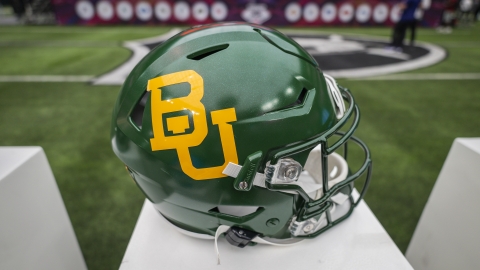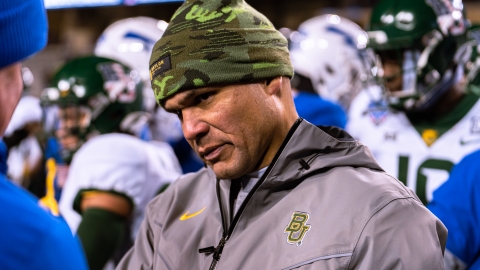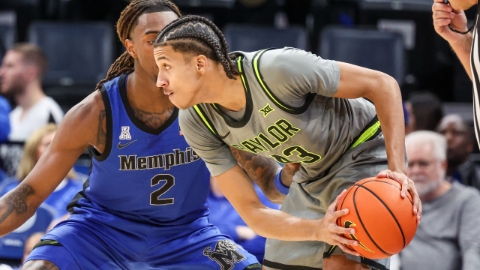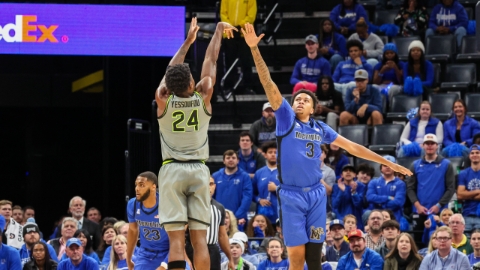The Pac-12 isn't sitting in neutral as Kliavkoff is focused on expansion in short term
Everything regarding the announcements within the college football world seem to be orchestrated.
Thursday evening Pac-12 commissioner George Kliavkoff went on record with the Review Journal based out of Las Vegas, saying that the league is open to and seriously considering expansion and a decision could be coming soon. This come just before The Athletic made public that the Pac-12, Big 10 and ACC could be announcing the details of an alliance soon.
To read the full Q&A between the Review Journal and Kliavkoff, click here.
While Kliavkoff made sure to protect himself and the league legally, stating bluntly that he isn’t attempting to recreate the SEC’s game plan when it took Texas and Oklahoma from the Big 12, it’s clear that expansion is on the table.
“The opportunity to revisit that following Texas and Oklahoma has certainly presented itself.” Kliavkoff told the Review Journal. “I am not actively poaching any school or convincing anyone to leave their existing conference, but I wouldn’t be doing my job if I wasn’t listening to schools that wanted to go in the Pac-12, and we’ve had a lot of them reach out.
“Probably all of the ones you would expect and several you’d be surprised by.”
It’s been made public that Big 12 commissioner Bob Bowlsby and Kliavkoff met to discuss a potential scheduling alliance and even a merger between the conferences. On the heels of that meeting and with the new reports that the additional three power brokers in college sports are close to forming an alliance together, however, perception is that the remaining Big 12 schools would be left stranded.
But maybe not. According to Kliavkoff, the league has a working group in place to advise on how the league should move forward with expansion. The connection between the two leagues has already been made, and the Big 12 has been mysteriously dismissed altogether since that time.
“We have taken initial meetings with everyone that has expressed an interest. We have a working group … who are together deciding on what to recommend … At the end of the day, they’ll make the decision about whether or not to offer admission to the Pac-12 to any other schools.”
According to the report by The Athletic on Friday morning, an announcement between the Pac-12, Big 10 and ACC could come as soon as next week.
Kliavkoff says the Pac-12’s decision will follow shortly after. Coincidental timing? Maybe. Maybe not.
“There’s no hard deadline related to any of this, but I would say I don’t think it’s good for college athletics given the vibration that’s going on as a result of the Texas and Oklahoma news,” Kliavkoff. ”The quicker we can dampen that vibration, the better. We will have a decision on whether we intend to expand or not in the next couple of weeks.”
While the Big 12 has been virtually silent on the issue — unsurprising considering Bowlsby dropped a bomb shell in the form of cease and desist order to ESPN — Baylor Director of Athletics Mack Rhoades recently told 365 Sports Radio that he doesn’t believe the remaining Big 12 programs will be left out of any alliance between the leagues.
"What are the objectives? What are the goals? I don't necessarily believe at this time the Big 12 won't be included," Rhoades said.
One driving factor for the Pac-12 to potentially merge with the remaining Big 12 programs would be exposure for the league. Kliavkoff addressed that owning the Mountain and Pacific times zones exclusively as a major advantage for the Pac-12 when it comes to negotiations for media rights.
But it’s also a disadvantage when the bulk of its games are shelved into the late hours of the evening on the Eastern time zone and even the majority of the Central time zone.
“Since we have the only Power Five teams in the Mountain and Pacific time zones, when we play a night game, we get paid handsomely for doing that because we’re filling a time slot no other Power Five conference can fill,” Kliavkoff told the Review Journal.
“Our audience is limited compared to a nationally televised game because a lot of the East Coast is already asleep or will be asleep by halftime.
“You also have AP voters and Heisman candidate voters who may not be able to see all of that game. So we’re getting paid more for that game, but it costs us in national exposure and perhaps a competitive advantage for getting into the (College Football Playoff).
“We’re going to have to balance all of that, but all media-rights negotiation is a balancing act.”
Related: The Big 12 and AAC TV ratings aren’t comparable
An alliance with the Big 10 and the ACC to counterbalance the recent moves by the SEC make a lot of sense for the Pac-12 on its quest to improve it’s power. But is one and possibly two non-conference games per season changing the issue of exposure from the start of the season until the end?
If appropriately applied, yes, it could have an impact. But what about that Nov. 11 game between Oregon and Washington in the midst of crunch time for CFP resumes and Heisman campaigns?
Kliavkoff doesn’t see a major shift in college football like some have predicted, but he did admit more change could be on its way.
“I think five years from now it’s likely to look a lot like it looks today, with some exceptions at the margins,” Kliavkoff said. “I think all of the talk about super conferences and the reclassification of some of the existing conferences is not necessarily going to happen.”
Whatever might happen, one thing is becoming more apparent: more movement is going to happen soon. Will whatever happens in the next two weeks be the end game? Doubtful.




